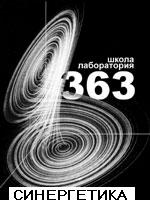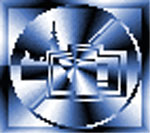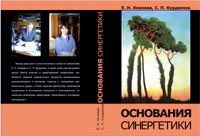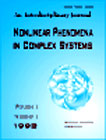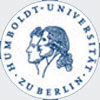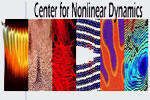
Gambles are random variables that model possible changes in wealth. Classic decision theory transforms money into utility through a utility function and defines the value of a gamble as the expectation value of utility changes. Utility functions aim to capture individual psychological characteristics, but their generality limits predictive power. Expectation value maximizers are defined as rational in economics, but expectation values are only meaningful in the presence of ensembles or in systems with ergodic properties, whereas decision-makers have no access to ensembles, and the variables representing wealth in the usual growth models do not have the relevant ergodic properties. Simultaneously addressing the shortcomings of utility and those of expectations, we propose to evaluate gambles by averaging wealth growth over time. No utility function is needed, but a dynamic must be specified to compute time averages. Linear and logarithmic “utility functions” appear as transformations that generate ergodic observables for purely additive and purely multiplicative dynamics, respectively. We highlight inconsistencies throughout the development of decision theory, whose correction clarifies that our perspective is legitimate. These invalidate a commonly cited argument for bounded utility functions.

One cannot consider the modern crisis as a purely financial, economic or environmental one. First of all, it is of the deep anthropological nature of the global consumer society: the inability of the modern world order to respond to the challenges of crisis imbalances in the global economy, the threats of local wars and pandemics, climatic, environmental and leisure crises, but most importantly, meaning crises which sharply exacerbate in the digital network society. Therefore, we proceed from a person, not from the economy, the latter should serve the person, and not vice versa, as is commonly considered today. It is clear that after the epidemic and crisis, the world will be different; there are not so many scenarios for overcoming them. These lines are being written during a period of unprecedented general panic over the epidemic of the COVID-19 (which is no more dangerous than the past swine or bird flu epidemics), with the help of which the Masters of the World are trying to justify the inevitable collapse of the global financial and economic system that generates the Great Depression 2.0, which began almost a year ago with an uncompromising trade war between China and the United States, and was accurately predicted by us back in 2018. Now, the richest families of the world, the largest investment funds and TNCs solve their problems of redistributing markets and get rid of their debt liabilities not by means of wars and revolutions that destroy the real material potentials of states and peoples, but sophistically, in a new way, by means of devastating many developed countries through their economic self-destruction during a halt of life in self-isolation and quarantine, the purchase of their assets, lands and real estate for nothing at the end of the crisis, the introduction of a total surveillance system and administrative and medical dictatorship. In fact, we are talking about a kind of ‘digital concentration camp’, the separation and self-destruction of people and peoples, and the establishment of a feudal-oligarchic dictatorship; to get this expected result, it is enough to maintain the fear of being infected and the prospects of new epidemic waves of new viruses that will necessarily appear, either artificial or generated by a sick biosphere. But the plans of manipulating fear are increasingly being destroyed by the awareness of the peoples’ interests by the national elites, the consolidation of people in spite of self-isolation, the awakening of spiritual values and conditions in people in the face of a mortal threat. All these opens a window to the new emerging world, another future for the World, to which the proposed theses are devoted.

The development of network society (the network revolution) in the present-day world necessitates the establishment of networked regulatory organizations that can exert a positive influence on this process. They can be regarded as analogs of biomolecular chaperones that function in the living cell. Such social chaperones can design optimal scenarios of the network revolution. They can take account of various possible organizational options (paradigms) of network structures. Chaperones can creatively use paradigms that function in biological systems ranging from unicellular organisms to schooling fish, social insects, and apes. Social chaperones can contribute to their implementation using the whole spectrum of possible strategies of promoting expedient network scenarios and convincing political leaders and government regulators of their importance for humankind.
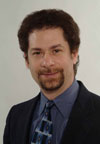
We consider the relationship between economic activity and intervention, including monetary and fiscal policy, using a universal monetary and response dynamics framework. Central bank policies are designed for economic growth without excess inflation. However, unemployment, investment, consumption, and inflation are interlinked. Understanding dynamics is crucial to assessing the effects of policy, especially in the aftermath of the recent financial crisis. Here we lay out a program of research into monetary and economic dynamics and preliminary steps toward its execution. We use general principles of response theory to derive specific implications for policy. We find that the current approach, which considers the overall supply of money to the economy, is insufficient to effectively regulate economic growth. While it can achieve some degree of control, optimizing growth also requires a fiscal policy balancing monetary injection between two dominant loop flows, the consumption and wages loop, and investment and returns loop. The balance arises from a composite of government tax, entitlement, subsidy policies, corporate policies, as well as monetary policy.
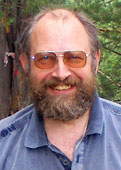
A formalization of the concept of a complex system simulation model is proposed, as a family of models-components with the standard organization of simulation calculations. This family is closed under the integration of models-components into the model-complex, so it is possible to synthesize fractal complexity models, without changing the computation organization. A new approach to the description, design and implementation of simulation models of complex systems arises – the model synthesis and model-oriented programming, allowing to exclude imperative programming, and to get the high degree of parallelism in the executable code.

Abstract. The modern civilization, known as Industry 4.0., is in the midst of a new industrial revolution. It is characterised by the pervasive implementation of convergent technologies, the shift in forms of ownership, fusion of cyber-physical and social realities, endowment of machines with elements of intellect and utilisation of social media in new communication alternatives. Such major social shifts will inevitably instigate a search for new methods of interaction between people and machines in all spheres, including economy, education, industry and everyday life. Gaining awareness of technological, economic and socio-anthropological risks is the primary subject of this paper. The authors analyse various social transformation scenarios, which are fraught with tectonic shifts in the modern society: disappearance of the middle class and unqualified workers, decreasing migration of unskilled workers to Western countries and their self-isolation, and increasing potential migration of the middle class to developing countries. The paper conducts an Umwelt-analysis of both man-machine system development prospects and the danger of the technological singularity, when machines endowed with artificial intelligence may create an economic and political situation that would threaten human strategic domineering and the very existence of humankind. The authors ponder alternative paths for the evolution of humanity through supporting international consolidating megaprojects, establishing network civil society structures, building an economy of trust, releasing mankind’s creative potential and spiritual values in the context of decreased industrial employment spurred on by the deployment of the digital economy, which will require a radical change in the aims and methods of education.

In the long term, nanocorpuscular mutagenesis will provide a new experimental basis for a deeper understanding of living systems’ development processes and for obtaining fundamentally new artificial life forms, and will thus expand the scope for the geneticists and biologists, biotechnologists and medical specialists. As regards the problem of genetic safety of materials obtained using nanotechnological synthesis, it will probably require the years-long, laborious genetic studies to tackle it successfully. In the modern context, only such studies may set up the barrier for the release of genetically hazardous nanomaterials into the environment.
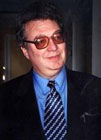
One of the most general definitions of creativity reads as follows: «Creativity is the process of solving a problem which gives rise to a new quality, and a new result» [Sosnin, 1997, p. 6; Beskova, 1993, p.162]. What does it mean to «creatively solve a problem», or to remove a contradiction? As we wrote earlier [Koblyakov, 2015, pp.261-279], the strategy of the computer in a problem-solving situation — in this case, the presence of mutually contradictory statements — comes down to a simple rejection of one of the alternatives, in other words, a reduction. In turn, the strategy of synthesis that combines alternatives is characteristic of a creative mind, which, at its core, differentiates it from a computer [Beskova, 1993, 165-169]. For example, Alfred Whitehead in his book «Process and Reality» (1929) writes that the purpose of art is «to move from disjunction to conjunction, and the formation of a new essence, different from the one given by disjunction» (Nalimov, 1989, p.162). Let us be reminded that in logic, the transition from disjunction to conjunction also means a transition from a disjoining statement to a conjoining one, from a juxtaposition or separation of qualities, processes, and phenomena, to a synthesis or a connection.

Abstract. The article is based on the round table2 (9 April 2019, Institute of Philosophy, Russian Academy of Sciences, Moscow). The main topic of the round table timed to International Internet of Things Day (IoT Day) was «Digital Philosophy Millennium Problems» by analogy with David Gilbert/Clay Institute mathematical Millennium Problems list. Presentations and discussion have been made by more than twenty academic researchers from different fields of philosophy and nonacademic digital professionals (engineers, designers, programmers, managers, businessmen). After the round table we have conducted a survey by email and social networks with more than one hundred Russian speaking researchers (from humanitarian and technical side). Also, we gather opinions by open facebook channel for digital specialists and general public from Russia and abroad. In result we have generalized philosophical problems, concerning digitalization and made some methodological work for these issues classification and reflection.

In a tornado presentiment life it is disturbing fades, tries it is realized or unconsciously to take cover, evade from unknown ways of death. The person the creator and the slave of social elements believing to be the full owner at the time of prosperity, it becomes helpless or mad in the times of troubles. Not a lot of persons manage to keep understanding of the events, to be active and reasonable at the same time. Responsibility of decision-making multiply increases and time for their acceptance and implementation doesn’t absolutely remain. Nevertheless, in the turbulent worlds there are laws and rules not only survivals, but also managements of reality, external and internal, there are laws of creation and damping of catastrophe and stability. It seems to us to its time to talk right now on these subjects.
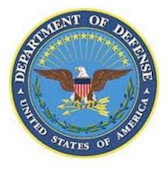
Given the wide-ranging implications for global competition, domestic political systems and daily life, US policymakers must prepare for the impacts of new artificial intelligence (AI)-related technologies. Anticipating AI’s impacts on the global order requires US policymakers’ awareness of certain key aspects of the AI-related technologies – and how those technologies will interact with the rapidly changing global system of human societies. One area that has received little in-depth examination to date is how AI-related technologies could affect countries’ domestic political systems—whether authoritarian, liberal democratic or a hybrid of the two—and how they might impact global competition between different regimes
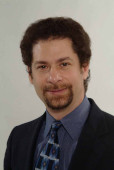
The standard assumptions that underlie many conceptual and quantitative frameworks do not hold for many complex physical, biological, and social systems. Complex systems science clarifies when and why such assumptions fail and provides alternative frameworks for understanding the properties of complex systems. This review introduces some of the basic principles of complex systems science, including complexity profiles, the tradeoff between efficiency and adaptability, the necessity of matching the complexity of systems to that of their environments, multi-scale analysis, and evolutionary processes. Our focus is on the general properties of systems as opposed to the modeling of specific dynamics; rather than provide a comprehensive review, we pedagogically describe a conceptual and analytic approach for understanding and interacting with the complex systems of our world. With the exception of a few footnotes, this paper assumes only a high school mathematical and scientific background, so that it may be accessible to academics in all fields, decision-makers in industry, government, and philanthropy, and anyone who is interested in systems and society.

Prof. Alexander V. Oleskin, General Ecology Dept., Biology Faculty, Moscow State University, oleskiny@yandex.ru Cao Boyang, Shenzen MSU-BIT University, Fundamental and Systemic Biology Master’s Degree Program SUMMARY The present Master’s Degree project aims to compare two kinds of decentralized network structures: (i) networks composed of interconnected plants tissues and organs as well as of whole plant organisms and their groups that exchange signals enabling them to perceive information (e.g., about the invasion of insect pests); this paart of the project includes experimental … »»
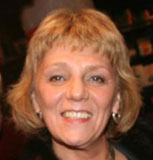
This paper looks at innovation ecosystems through the lens of complexity science, considering them as open non-linear entities that are characterized by changing multi-faceted motivations of networked actors, high receptivity to feedback, and persistent structural transformations. In the context of the growing organizational complexity of economies, driven by their adaptation to high uncertainty, and the central role of collaboration, we differentiate the innovation capacity of various types of business networks by the complexity of their internal interactions, thus identifying the place of innovation ecosystems in the world of business networks, as well as the place of innovation clusters among other innovation ecosystems.

Geoffrey West is Distinguished Professor and former President of the Santa Fe Institute and a Senior Fellow at Los Alamos National Laboratory. He holds a B.A. from Cambridge and a Ph.D. from Stanford where he was on the faculty. His interests have been in fundamental questions from elementary particles to scaling laws in biology and social systems, and on developing a science of cities, companies, and global sustainability. His research includes metabolism, growth, aging, sleep, cancer, ecosystems, and the accelerating pace of life. He has received many awards and was on Time’s 2006 list of “100 Most Influential People in the World.” His work was cited by the Harvard Business Review as a breakthrough idea of 2007.

Decentralized distributed network structures have much social and, more specifically, political potential, as emphasized in a number of previous publications of the authors. They are successfully used for carrying out important political projects, including, e.g., the development of non-governmental organizations that form a part of civil society and perform ideological and consulting functions. This work outlines social/political strategies aimed at optimizing the use of network structures in the present-day society. Inevitably, decentralized networks have to deal with non-network structures such as centralized hierarchies (including bureaucracies) and (quasi-)markets.
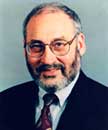
When the US investment bank Lehman Brothers collapsed in 2008, triggering the worst global financial crisis since the Great Depression, a broad consensus about what caused the crisis seemed to emerge. A bloated and dysfunctional financial system had misallocated capital and, rather than managing risk, had actually created it. Financial deregulation – together with easy money – had contributed to excessive risk-taking. Monetary policy would be relatively ineffective in reviving the economy, even if still-easier money might prevent the financial … »»

Presidential Address to the 17th World Congress of the International Economic Congress, Dead Sea, Jordan June, 2014. This address is based in part on joint work with Bruce Greenwald and Martin Guzman. Helpful discussions with Adair Turner, particularly on Part III, and with Rob Johnson, Martin Guzman, and Arjun Jayadev, are gratefully acknowledged. I am indebted to INET for financial support, and to Feiran Zhang, Debarati Ghosh and Ruoke Yang for research assistance. The first two parts of this lecture are a development of ideas presented earlier in Stiglitz (2011, 2013). For a more extensive list of references, see those papers. The views expressed herein are those of the author and do not necessarily reflect the views of the National Bureau of Economic Research.

This work is concerned with distributed decentralized network structures that are characterized by cooperative interaction among their parts (nodes). Although such decentralized cooperative structures exist in various kinds of systems, emphasis is placed on their role in biology and the social sciences. In human society, network structures are of considerable potential importance in terms of social/political technology: they enable us to establish efficient creative research laboratories, to modernize the educational system, and to establish horizontal interfirm alliances and intrafirm networks. Of special interest in terms of such organizational projects are biological organizational patterns (network paradigms), i.e., specific network scenarios that work in various biological systems and can be efficiently used to set up network structures in various spheres of human society. Importantly, the development of network structures in human society promotes the implementation of the basic principles of socialism in it.

Decentralized distributed network structures have much social and, more specifically, political potential, as emphasized in a number of previous publications of the authors. They are successfully used for carrying out important political projects, including, e.g., the development of non-governmental organizations that form a part of civil society and perform ideological and consulting functions. This work outlines social/political strategies aimed at optimizing the use of network structures in present-day society. Inevitably, decentralized networks have to deal with non-network structures such as centralized hierarchies (including bureaucracies) and (quasi-)markets. The successful spreading of network structures in society and harmonious interactivity between different types of social/political structures are promoted by creatively combining (1) the top-down strategy implying that network structures are officially granted political rights and given a legal status (preferably articulated in the country’s Constitution) and that special mediator organizations are established to regulate network-hierarchy-market interaction and (2) the bottom-up strategy based upon setting up exemplary network structures, demonstrating their potential usefulness in various social/political spheres, persuading socially active people into joining the networks (using online technology). In this work, it is emphasized that the spreading of decentralized distributed network structures in present-day society actually results in the transition to a new social system. This emergent network society implements the principles of self-governed socialism in the field of economics and promotes the regime of network meritocracy in the political sphere.
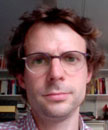
Introduced by the late Per Bak and his colleagues, self-organized criticality (SOC) has been one of the most stimulating concepts to come out of statistical mechanics and condensed matter theory in the last few decades, and has played a significant role in the development of complexity science. SOC, and more generally fractals and power laws, have attracted much comment, ranging from the very positive to the polemical. The other papers (Aschwanden et al., 2014; McAteer et al., 2014; Sharma et al., 2015) in this special issue showcase the considerable body of observations in solar, magnetospheric and fusion plasma inspired by the SOC idea, and expose the fertile role the new paradigm has played in approaches to modeling and understanding multiscale plasma instabilities.

As we educate ourselves, our colleagues, and the public at large about emergence, I would like to suggest two challenges for SFI that relate to its potential role as a world leader in science education. First, given the importance of emergence as a unifying paradigm for science, can the SFI community help spread the word about emergence to learners of all ages? Could we, for example, create an online course that introduces middle and high school students to science through the study of emergent behavior – and helps them develop an emergent perspective on the world around them? Could we increase the focus on emergent behavior in our existing educational programs, beginning with our middle school programs, and infuse this kind of thinking into our signature summer schools? Second, can we create an online “Gateways Registry”? This would be an accessible, jargon-free catalogue of existing organizing concepts and principles that have been successfully incorporated into models that explain emergent behavior. We would then add new ones as they are discovered. In my view, it is the Institute’s responsibility to capture and catalogue what we have learned about gateways to emergence for the benefit of future generations of scientists. — David Pines

This book focuses on network structures in biological systems and in human society. The term “network structure” is used in the literature in at least two different meanings. The broader meaning (denoted by this author as a network sensu lato) refers to any system composed of nodes (vertices) connected by links (edges). In terms of this interpretation, the analytical tools that deal with centrality measures, clustering- and community structure-related criteria, small-world behavior, and other network characteristics have provided important insights into the organization and functioning of various objects, including biological systems and human society.

The article proposes principles of construction of the theory of intersubjective management, based on postnonclassical scientific rationality and on concept of a free society, wherein the stake is made on non-violent means of decision-making oriented towards attainment of mutual understanding and consensus of heterogeneous actors who are in a problem situation and aimed to settle it. The actors not only cognize the world, but they create it. When occurs that they are bound by a common problem situation, the actors, possessing, by their nature, intersubjective mind, realize it differently, although they recognize simultaneously the necessity of any coordinated actions to control the situation. Following the conventional concept of truth by Poincaré, who interpreted the truth as the result of a convention, an agreement may be achieved to recognize certain subjective knowledge to be true for a restricted circle of actors. Such knowledge may be called intersubjective. In contrast to the bureaucratic theory that ignores individual qualities of the human being and sees it as a “cog” in the administrative mechanism, the theory of intersubjective management proceeds from the fact that the reserves of management efficiency rise should be sought not in the bureaucratic machine modernization, but in the human being, in every person, in the use of his intellectual and volitional resources.

Everyone takes an interest in forecasts, both the specialist and the man on the street. Both wish to know the extent of reliability of complex engineering structures like nuclear power stations, aircraft, and ocean liners, or to receive timely information about an approaching tsunami or an impending earthquake. In recent years, thanks to advances in nonlinear dynamics, risk management theory, and self-organized criticality theory, some fundamental limitations of forecasts were identified. These limitations were discussed at a RAS presidium meeting held at the end of 2000. The meeting’s deliberations formed the basis of the paper and discussion below.

Our everyday descriptions of the universe are highly coarse-grained, following only a tiny fraction of the variables necessary for a perfectly fine-grained description. Coarse graining in classical physics is made natural by our limited powers of observation and computation. But in the modern quantum mechanics of closed systems, some measure of coarse graining is inescapable because there are no non-trivial, probabilistic, fine-grained descriptions. This essay explores the consequences of that fact. Quantum theory allows for various coarse-grained descriptions some of which are mutually incompatible. For most purposes, however, we are interested in the small subset of “quasiclassical descriptions” defined by ranges of values of averages over small volumes of densities of conserved quantities such as energy and momentum and approximately conserved quantities such as baryon number. The near-conservation of these quasiclassical quantities results in approximate decoherence, predictability, and local equilibrium, leading to closed sets of equations of motion. In any description, information is sacrificed through the coarse graining that yields decoherence and gives rise to probabilities for histories. In quasiclassical descriptions, further information is sacrificed in exhibiting the emergent regularities summarized by classical equations of motion. An appropriate entropy measures the loss of information. For a “quasiclassical realm” this is connected with the usual thermodynamic entropy as obtained from statistical mechanics. It was low for the initial state of our universe and has been increasing since

Global population growth is described over practically the whole of human history by assuming self-similarity as the dynamic principle of development. Nonlinear growth is proportional to the square of the number of people due to a collective interaction of an informational nature. Estimates of the beginning of human development 4 – 5 million years ago and of the total number of people who have ever lived since then 100 billion are made. Large scale cycles, defined by history and anthropology, are shown to follow an exponential pattern of growth, culminating in the demographic transition. A veritable revolution, when global population growth is to stabilize at 10 – 12 billion in the foreseeable future.

Today a change is imperative in approaching global problems: what is needed is not arm-twisting and power politics, but searching for ways of co-evolution in the complex social and geopolitical systems of the world. The modern theory of self-organization of complex systems provides us with an understanding of the possible forms of coexistence of heterogeneous social and geopolitical structures at different stages of development regarding the different paths of their sustainable co-evolutionary development. The theory argues that the evolutionary channel to the observed increasing complexity is extremely narrow and only certain discrete spectra of relatively stable self-maintained structures are feasible in complex systems. There exists a restricted set of ways of assembling a complex evolutionary whole from diverse parts. The law of nonlinear synthesis of complex structures reads: the integration of structures in more complex ones occurs due to the establishment of a common tempo of their evolution. On the basis of the theory, we can see not only desirable but also attainable futures.

Why is it that a whole can acquire properties that are not intrinsic to any of its parts? Many of us have been confronted with a situation where each member of a collective is «against» or hesitates, whereas the overall vote is affirmative. The same problem can be noticed in chemical kinetics. Chemical transformations take place at the molecular level, but oscillatory reactions exist where almost all of the molecules start to run synchronously, as if on a mutual agreement, or obeying the rule of an invisible director. In this case, the solution in the test tube can periodically change its color, becoming now blue, and now red. One of the fundamental problems in biology is that of morphogenesis. As believed by biologists, each cell has one and the same set of genes. Then how is it that these cells, in the course of the development of the organism, «know» which of them are to become brain cells, or which of them are to become heart cells? In 1952, the attempt of Alan Turing, one of the fathers of cybernetics, to construct an exceedingly simple model for explaining this selection, marked the birth of synergetics.

We review an emerging body of work by physicists addressing questions of economic organization and function. We suggest that, beyond simply employing models familiar from physics to economic observables, remarkable regularities in economic data may suggest parts of social order that can usefully be incorporated into, and in turn can broaden, the conceptual structure of physics. In the last decade or so physicists have begun to do academic research in economics in a newly emerging field often called “econophysics”. Perhaps a hundred people are now actively involved, with two new journals1 and frequent conferences. At least ten books have been written on econophysics in general or specific subtopics (We are restricted by citation limits here, but an extensive bibliography of the books and archived articles is maintained on the econophysics website, http://www.unifr.ch/econophysics).

Das vergangene Jahrhundert wird oft als das der Industriegesellschaft bezeichnet. Zu ihrer Entwicklung trugen zum einen fundamentale Erfindungen bei, dann aber auch neuartige Produktionsmethoden, wie das Flie? band, und die extreme Arbeitsteilung im Sinne des Taylorismus. Zu Ende jenes Jahrhunderts zeichnete sich bereits die Formierung der Informationsgesellschaft ab. Die technischen Moglichkeiten, wie sie sich insbesondere in der Kernkraft und neuerdings in der Gentechnik wie auch in den Computerwissenschaften darstellen, werden allerdings nicht nur als Segen, sondern oft auch als Bedrohung empfunden. Damit einher gehen neuartige Anforderungen an menschliche Organisationen, wie den Staat und seine Institutionen mit seiner Gesetzgebung, der Gesundheitsfursorge, usw. und damit die Frage, wie die Organisationskonstrukte der modernen Gesellschaft die Problemstellung der Informationsgesellschaft bewaltigen konnen.

Dr. Ackoff is the author and co-author of 19 books, including Redesigning the Future, The Art of Problem Solving, Creating the Corporate Future, Revitalizing Western Economies, and Management in Small Doses, Ackoff’s Fables, The Democratic Corporation, and his most recent book, Ackoff’s Best—His Classic Writings on Management.

Im Zeitalter der Globalisierung werden die Lebensbedingungen der Menschen immer komplexer und unubersichtlicher. Taglich erleben wir die labilen Gleichgewichte in Politik, Wirtschaft und Gesellschaft. Einige Lander furchten den Verlust gewohnter Besitzstande und den Absturz ins Chaos. Andere sehen die Chancen kreativer Innovation und den Aufbruch zu neuen Markten. Chaos, Ordnung und Selbstorganisation entstehen nach den Gesetzen komplexer dynamischer Systeme — in der Natur und der Gesellschaft.

The eighteenth century is one of the most brilliant centuries in the history of Russia. The resounding victories over Sweden and Turkey allowed Russia to strengthen her position on the shores of the Baltic and Black seas, to annex Poland, Baltic lands and the Crimea and ensured the rank of a great military power for her. Russia built up not only a powerful Army and Navy but also a national industry. Art, sciences and education were developing, foreign- and home-trade turnovers were growing, the economy was getting commercialised and considerable economic growth was evident. Some scholars even believe that at the turn of the nineteenth century in terms of national income per capita Russia neared Britain. Much has been written about successes. But the issue of the material conditions of the people is still being neglected. Were these victories accompanied by the growth of the well-being of the population or, on the contrary, were achieved at its expense? That is question to which I am trying to find answer in this article.

On classic second-order blow-up models and higher-order diffusion. Blowup phenomena as intermediate asymptotics and approximations of highly nonstationary processes are common and well known in various areas of mechanics and physics. Theorigin of intensive systematic studies of such nonlinear effects was gas dynamics (since the end of the 1930s and 1940s) supported later in the 1960s by plasma physics (wave collapse) and nonlinear optics (self-focusing phenomena). Nevertheless, it was reaction-diffusion theory that exerted the strongest influence on mathematical blow-up research since the 1970s. It is not an exaggeration to say that precisely reaction-diffusion theory proposed basic and canonical nowadays models, which eventually led to qualitative and rigorous description of principles of formation of blow-up and other singularities in nonlinear PDEs.

By far the greatest danger of Artificial Intelligence is that people conclude too early that they understand it. Of course this problem is not limited to the field of AI. Jacques Monod wrote: «A curious aspect of the theory of evolution is that everybody thinks he understands it.» (Monod 1974.) My father, a physicist, complained about people making up their own theories of physics; he wanted to know why people did not make up their own theories of chemistry. (They do.) Nonetheless the problem seems to be unusually acute in Artificial Intelligence. The field of AI has a reputation for making huge promises and then failing to deliver on them. Most observers conclude that AI is hard; as indeed it is. But the embarrassment does not stem from the difficulty. It is difficult to build a star from hydrogen, but the field of stellar astronomy does not have a terrible reputation for promising to build stars and then failing. The critical inference is not that AI is hard, but that, for some reason, it is very easy for people to think they know far more about Artificial Intelligence than they actually do. In my other chapter for Global Catastrophic Risks, «Cognitive biases potentially affecting judgment of global risks», I opened by remarking that few people would deliberately choose to destroy the world; a scenario in which the Earth is destroyed by mistake is therefore very worrisome. Few people would push a button that they clearly knew would cause a global catastrophe. But if people are liable to confidently believe that the button does something quite different from its actual consequence, that is cause indeed for alarm.
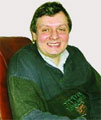
Despite the efforts made over the past decades by some outstanding scholars, the interrelations between economic theory and economic history are far from harmonious. Economic theorists often continue to regard history as a mainly descriptive, «non-analytical» discipline. Economic historians are just as often dissatisfied with the formalism of theory and its inadequate attention to institutional aspects. But the point is that within the framework of these sciences, which do indeed take a largely different view of the economy, there are two areas—Chandlerian business history and standard cost theory—which definitely have a large potential for interaction
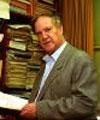
Of all the global problems looming on our common horizon that of population growth comes first. It sets the scene for considering major issues of social and economic development, of science, education and art, of growth and security. In dealing with these matters a new way has to be found to comprehend the challenge of change. For one has to go beyond the agenda of demography and economics, sociology and anthropology, and see mankind as an evolving system. Without a broad vision of our past it is impossible to understand the present predicament of mankind, the crisis now facing us in so many dimensions of life, and project our future development. In this New World, not dictated by numerical growth, education and science will become the main issues in a knowledge society of an information-dominated world. It is then, where the old outnumber the young, to be sustainable, a new system of values are to develop.

New science of complexity, i.e. synergetics, is in the process of becoming widely appreciated now. Synergetics deals with cognition and explanation of complex structures, principles of their self-organization, generation of order from chaos, evolution and co-evolution. Synergetics as an interdisciplinary research field has far going applications to understanding of human being and development of social systems. The synergetic approach to education, synergetics of education, can be characterized as a gestalt-education. The procedure of education, a way of connection between a teacher and a pupil, is not a transfer of knowledge from one head to another. It is neither an enlightenment nor rendering of some already discovered truths. This is a nonlinear situation of an open dialogue with an intermediate feedback, a joint educational adventure. This is falling — in course of solving some problems — into one and the same self-concordant tempo-world. The latter means that due to common activity the teacher and the pupil begin to develop with the same rate. The educational procedure consists simply in awakening of the forces and abilities of a given pupil and in stimulating progress on his or her own paths of development. The gestalt-education is an initiating education, reopening of ourselves, collaboration with ourselves and with other people. It is a way to discover the reality as well as to search paths into the future

Numerous Earth-destroying doomsday scenarios have recently been analyzed, including break-down of a metastable vacuum state and planetary destruction triggered by a “strangelet” or microscopic black hole. We point out that many previous bounds on their frequency give a false sense of security: one cannot infer that such events are rare from the the fact that Earth has survived for so long, because observers are by definition in places lucky enough to have avoided destruction. We derive a new upper bound of one per 109 years (99.9% c.l.) on the exogenous terminal catastrophe rate that is free of such selection bias, using planetary age distributions and the relatively late formation time of Earth.

Unsere Welt befindet sich gegenwartig in einer tiefen gesellschaftlichen Krise. Politiker, Manager und Wissenschaftler suchen nach Auswegen aus dieser Krise und nach einem Leitfaden fur die Gestaltung des 21. Jahrhundert. Von vielen Menschen, besonders von Jungeren wird gefragt, ob die Resultate der Forschungen uber Selbstorganisation weiterhelfen konnen, Auswege aus den heute sichtbaren Sackgassen zu finden und gangbare Wege zur Gestaltung einer lebenswerten Zukunft der Menschheit zu weisen. Ein wichtiges Resultat der Wissenschafts-entwicklung im 20. Jahrhundert ist die Theorie der Selbstorganisation, die von zwei bedeutenden wissenschaftlichen Schulen in Brussel um Ilya Prigogine und in Stuttgart um Hermann Haken entwickelt wurde. Wir sind der Aufassung, dass die Resultate dieser Theorie und ihre Anwendung auf sozial-okonomische Prozesse einen wichtigen Beitrag zur Entwicklung von Strategien fur die Zukunftsgestaltung leisten konnen.

Despite important recent achievements in various fields of science ranging from genetic engineering to quantum physics and space research, a serious challenge for the present-day world is the necessity to urgently reform the organization of the scientific community in order to drastically increase its efficiency and productivity and to avoid serious problems exemplified by unjustifiable procrastination in the development of a COVID-19 vaccine that has had disastrous global consequences. Such problems are particularly prominent in countries like Russia and China, where the scientific community has been struggling with a systemic crisis. In this work, decentralized networked patterns of teams of researchers, experts, and science entrepreneurs are suggested. One possible scenario is the hirama (High-Intensity Research and Management Association), i.e. a decentralized network structure with several partial creative leaders. In addition, living nature has created at least seven different scenarios (paradigms) of network structures during the course of its evolution. All these paradigms are potentially applicable to teams dealing with creative scientific work and can be efficiently combined to develop novel organizational patterns for scientific research and related business projects. Apart from scientific research activities per se, network structures can be used in environmental, educational, and health care institutions. The establishment of digital platforms in the modern informational age is expected to significantly promote the development of decentralized network structures (DNSs). This process is also facilitated by decentralized blockchain-based transactions, especially if virtual currencies are used. In this work, it is suggested that the development of network structures and the optimization of their operation is to be achieved by setting up guidelines-providing networks denoted herein as chaperones. Chaperones are expected to promote the development of large-scale influential meganetworks that should constitute the backbone of the emergent networked (reticular) social and economic system. The development of this promising innovative system should be facilitated by such practical steps as establishing an innovative Research Institute for Network Structures (RINS), a Networks-Promoting Committee (empowered to suggest new laws that grant a legal status to decentralized networks), and a large number of counseling commissions and incubators for new developing DNSs, especially for those dealing with scientific R & D activities.








